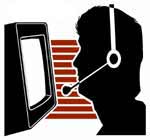|
They say you really have to know your subject to explain it so that even a layperson can understand it. Dr. Vinton Cerf, known as one of the "Fathers of the Internet," obviously knows his subject. And while the audience at his City Club presentation held Friday May 5th was much more techie (he warned the crowd to set our modems to 50 Gigabits per second) than layperson, he still used some simple analogies to explain complex technology.
 Cerf and Robert Kahn co-designed the Transmission Control Protocol/Internet Protocol (TCP/IP) that essentially lets the Internet work. He explained the problem of sending Internet packets using a post card example.
Cerf and Robert Kahn co-designed the Transmission Control Protocol/Internet Protocol (TCP/IP) that essentially lets the Internet work. He explained the problem of sending Internet packets using a post card example. If you send a post card you can't be 100% sure that the recipient will ever get it. So maybe you send 2 postcards. But still there is no guarantee. And if you have something longer that requires 2 or more postcards there is no guarantee that the recipient will receive them all or in the order sent and be able to reassemble them in the proper order.
Cerf said they had to "discipline the system" so they put the TCP on top of the IP. He asked how you would send a book to a friend via postcards. You could cut the pages of the book up, number them sequentially and send. You would need to keep copies to re-send in case your friend didn't receive them all. But you can't just keep sending postcards indefinitely so you would need progress reports from your friend telling you what he has received.
If they were lost, you would keep sending until you got a response back that he had them. Maybe you would not send more than 200 or so postcards at a time - that's flow control.
He had a T-shirt made up years ago that said "IP on everything." That has evolved to "IP under everything."
He told how many seemingly new technologies have been around for a long time. E-mail was available in 1971 via the Arpanet. And while Tim Berners Lee created the World Wide Web in 1989, Douglas Engelbart, creator of the mouse, portrait display and more) was working on hypertext and hyperlinks in the 1960's and early 1970's.
While we now all use Yahoo and Google, we used to search the Internet via Gopher and WAIS.
Even Voice over Inter Protocol (VOIP) seems new but isn't really. They experimented with it back in 1975. It's the same process as now: digitize sound, break it into packets and transmit. Of course the backbone then was only 50 Kbps and you need 64 Kbps for one voice channel. So they needed to compress the audio and Cerf said it made "everyone sound like a drunken Norwegian." But their one associate Ingmar was, in fact, a Norwegian so he sounded exactly the same on the tests, Cerf joked.
Today's backbone is 10 Gbps so VOIP is a lot easier and clearer.
Cerf is now working on the Interplanetary Internet with the Jet Propulsion Laboratory. This, of course, brings a whole new set of challenges because, as Cerf said, "distances between planets even at the speed of light are astronomical." With 20 minute gaps between transmissions, even at the speed of light "flow control is bad."
And there are issues with celestial motion so they are working on a new set of protocols like TCP/IP called Delay and Disruption Protocols.
Be sure to listen to the podcast of Cerf's presentation at the CityClub site. It's well worth the time to listen to one of the pioneers.
How the Internet Came to Be
by Vinton Cerf, as told to Bernard Aboba in 1993
Top of Page
| 


